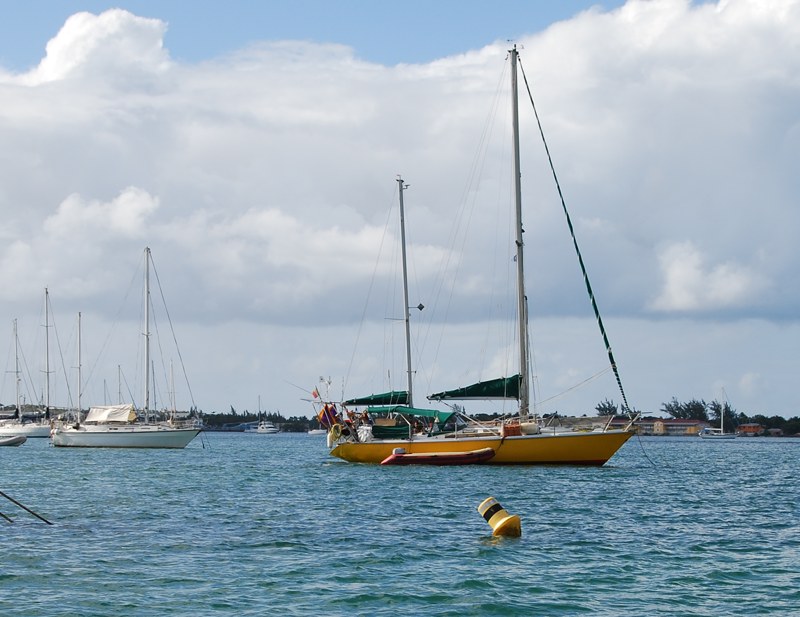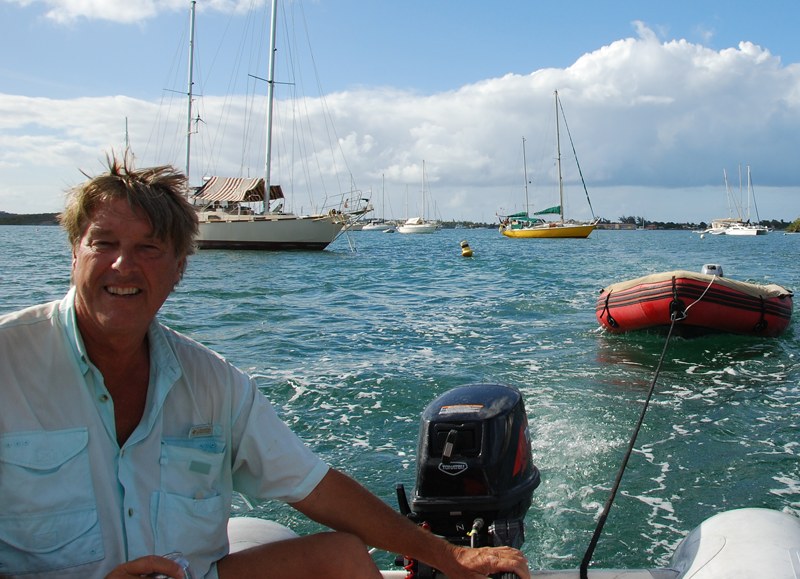
Two Wrongs Finally Make a Right

Is there anything more evil than stealing somebody’s dinghy when it’s their only way to get between the boat and shore? We don’t think so, which is why the gods reserve a particularly hot place in hell for people who do things like that.
The day before we left St. Barth for the Bay Area, via St. Martin, last week, we were told that the dinghy for Donald Tofias’ W-76 Wild Horses had disappeared from the dinghy dock at Charles de Gaulle Quai. Making it worse was the fact that it had last been in control of a young guy from another boat. If you think the owner of the dink felt bad, the young guy felt horrible.
Sometimes dinghies are lost because people tie ‘drunk knots’ and the dinghies blow away in the trades or drift in the current. It was unlikely this had been the case with the Wild Horses’ dinghy, because the Charles de Gaulle Quai is in the inner harbor at Gustavia. Not only would it have had to make its way past all the boats in the inner harbor, but the hundreds of boats in the outer harbor as well. Not very likely.
So it was assumed that the dinghy had been stolen. In several people’s minds, the prime suspects were the French crew of a yellow ketch that had been anchored in the outer harbor the week before. The crew was suspect because they didn’t have a dinghy, and had been left to beg for mile-long dinghy rides to shore.
So when we got to the Simpson Bay Lagoon in St. Martin, and were buzzing around in our dinghy prior to our flight home, we kept an eye out for the distinctive yellow ketch. And we saw her! But after circling the yacht, we didn’t see the the big Wild Horses‘ dinghy, which is unusual in that it’s larger than most, is red, and has a brown Sunbrella top to protect the fabric.
After heading off on other errands, we returned to the general area of the yellow ketch about an hour later. While hanging off the back of Mike Harker’s Manhattan Beach-based Hunter 49 Wanderlust III and talking about his upcoming second circumnavigation, we glanced over at the 200-yard distant yellow ketch. Son of a gun, the Wild Horses dinghy was tied up right next to her!
See ya, Mike! We took off at full speed for the yellow ketch, standing in our dinghy, and introducing ourselves at the top of our lungs by shouting, "You f–kin’ thieves, you stole that dinghy, and we’re takin’ it back right now!"
Initially pretty quiet, one of the three crew finally mounted a defense. "We found it in the middle of the ocean," he claimed. When we demanded to know exactly where, he said Isle Forchue. Which meant, even if he wasn’t lying — which he was — it would have been obvious the dinghy had drifted the short distance down from St. Barth. And since the dinghy had the boat’s name written in big letters, finding the rightful owner would have been as simple as pie.

In any event, the thieves made no effort to prevent David Addleman and Heather Corsaro of the Monterey-based Cal 36 Eupsychia from untying the dinghy and our taking her away. So yeah, we stole her back, with the second wrong, for once, making a right. Almost immediately after we left, the yellow ketch left the anchorage, no doubt fearing the harbor police were on their way.
Stealing dinghies is, unfortunately, not that unusual, particularly in the Caribbean. Indeed, about 20 years ago one French cruiser wrote a book in which he suggested that stealing dinghies and then selling them was a good way to finance a cruise. It’s not.
